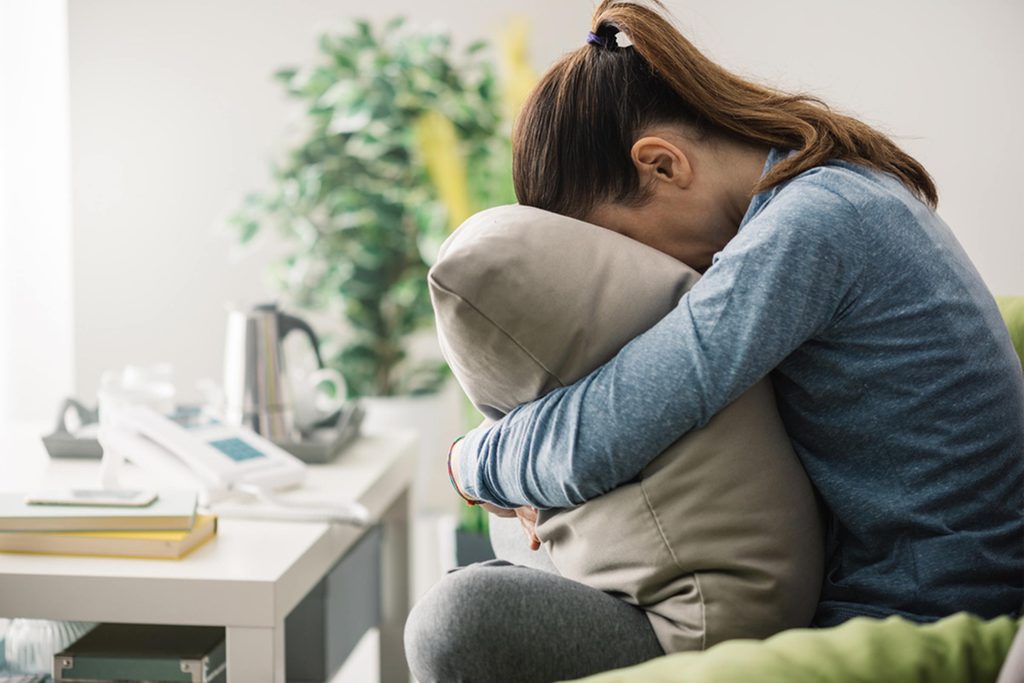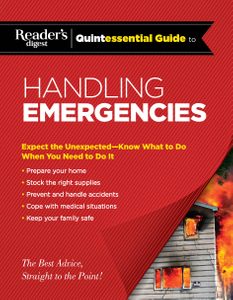4 Steps to Help You Calm Down from a Panic Attack—and 2 You Should Avoid
Updated: Oct. 09, 2020
This sudden case of extreme anxiety can be alarming. Follow these steps to help yourself or someone else recover from a panic attack safely and quickly.

A panic attack is a sudden bout of extreme anxiety that can be brought on by a strong fear of something (phobia), a stressful situation, or an emotional upset. It reaches its peak intensity within 10 minutes or less and then starts to subside. Panic attack treatment is not difficult if you know the signs. The following symptoms are characteristic of panic attacks, as are these 10 clear signs you’re having a panic attack.
Panic attack symptoms to know
- Fast breathing, such as hyperventilation or overbreathing
- Accelerated heart rate
- Chest pain or tightness
- Trembling
- Feeling lightheaded
- Tingling in the hands or feet
- Chills or hot flashes
- Fear of dying
With heart attacks, excruciating chest pain reaches maximum severity in just a few minutes and can radiate to other parts of the body. Pain caused by panic attacks is generally localized in one area. If you have a history of heart problems and experience these symptoms, treat them like they’re caused by a heart attack until a doctor proves otherwise. Make sure you know the 7 silent signs of a heart attack.
Once you’ve recognized you or someone else is exhibiting clear symptoms, take the proper steps for panic attack treatment that will calm the mind and body and stay away from actions that could make the situation worse.
Panic attack treatment “dos”:
Remove the cause. Try to find out the cause of the person’s fear or anxiety and separate her from it. Either remove it from them or move them away from it.
Be firm. Try to calm the patient by talking firmly but kindly and calmly to them. Explain that they are having a panic attack and keep others away.
Encourage them to breathe calmly. Breathing more slowly will help to calm them and stop them from hyperventilating. Take deep, slow breaths and encourage them to copy your breathing pattern.
Monitor the patient. Stay with them until he has recovered. If he has a history of panic attacks, advise him to seek help to learn how to control them.
Panic attack treatment “don’ts”:
Restrain anyone who is having a panic attack. And never attempt to slap or hit the person to “snap them out of it.”
Ask them to rebreathe air from a paper bag. This can cause low blood oxygen levels. However, the person can try alternating taking 6-12 natural breaths with the bag covering the nose and mouth and breathing the same way without the bag. Never use a plastic bag.
Once the panic attack has passed and you’ve had time to recover, take some time to prepare for future stress-induced incidents. To help you better understand what you’re feeling, how you can cope, and how to prevent more attacks, check out these tips for managing anxiety and panic disorder.
 Get more information about handling health emergencies and natural disasters in the new book Reader’s Digest Quintessential Guide to Handling Emergencies. You’ll get must-know tips and tactics for preparing your home, stocking the right supplies, preventing and handling accidents, coping with medical situations, and keeping your family safe. Learn more and buy the book here.
Get more information about handling health emergencies and natural disasters in the new book Reader’s Digest Quintessential Guide to Handling Emergencies. You’ll get must-know tips and tactics for preparing your home, stocking the right supplies, preventing and handling accidents, coping with medical situations, and keeping your family safe. Learn more and buy the book here.